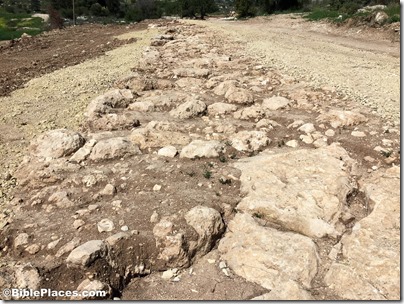“An Egyptian archaeological mission in Luxor has announced the discovery of a major tomb in the city’s west bank area dating back to the 18th Dynasty and containing priceless artefacts.”
Israeli archaeologists have begun to study an ancient Jewish pyramid near Khirbet Midras in the Shephelah.
Archaeologists have discovered an estate of Emperor Marcus Aurelius in the mountains of southwestern Turkey.
Symbols found on the the Vulture Stone at Gobekli Tepe in Turkey has led researchers to propose the earth was struck by a devastating comet around 11,000 BC.
Shots were fired near St. Catherine’s Monastery at Mount Sinai, but there are different explanations of what happened.
The Qumran and Bible Exhibition is now online with an audioguide and with a video introduction.
The latest edition of The Holy Land Magazine is online and includes tourist articles on Nazareth Village, Yad VaShem, Neot Kedumim, and more.
Tom Powers considers David Bivin’s recent post on the deteriorating road to Emmaus and adds some observations of his own.
Elizabeth Sloane, writing in Haaretz, asks, “Did the Egyptian goddess Hathor originate with Semitic miners from Canaan?”
The Temple Mount Sifting Project must meet its fundraising goal or it will receive none of the pledged funds.
The Amarna Letters are the topic of the week on The Book and the Spade with guest Alice Mandell.
The Khirbet el-Maqatir exhibit in Pikeville, Kentucky is drawing visitors.
Eisenbrauns is offering the Victor Avigdor Hurowitz memorial volume at a savings of 40% for a few more days: Marbeh Ḥokmah: Studies in the Bible and the Ancient Near East (2 vols). List $139.50; sale: $83.70.
HT: Charles Savelle, Ted Weis, Joseph Lauer, Agade




